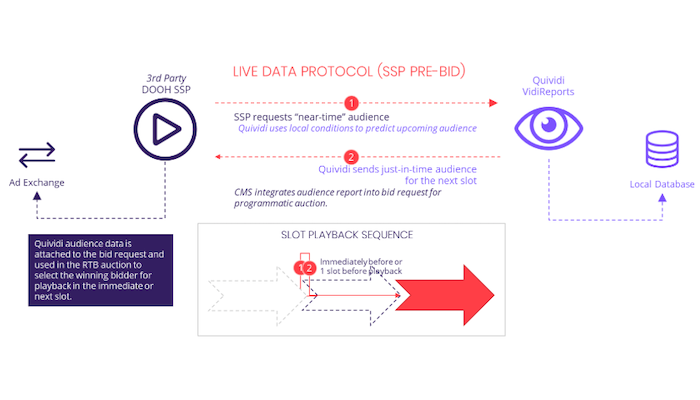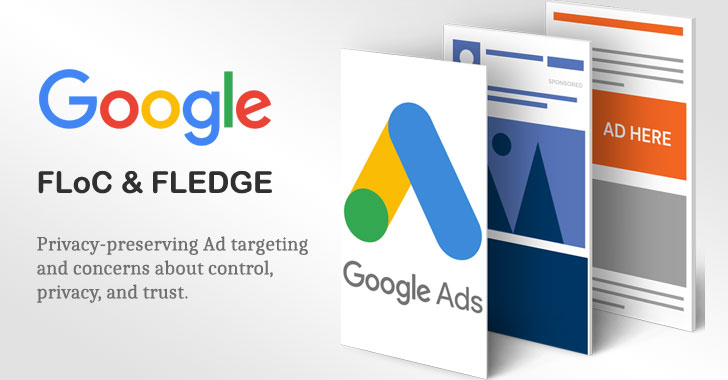
You have decided to build your own digital marketing strategy. What's next? What's next? This article will help you navigate the different steps, starting with choosing your channel and researching your audience. This article will show you how to create customer journeys and split-test your strategy. This will allow you to see if your new strategy works for your brand. If not, you're not alone. Many other businesses have asked the same question: How do I create a digital marketing strategy?
Researching your audience
Research your audience is key to creating a digital marketing strategy. You can accomplish this by conducting quantitative research. This involves taking a survey of a large group and generating statistical findings. If you are looking to create an email campaign that targets a particular audience, for example, you will need to identify their pain points and interests. You can also look at their past purchases to determine their buying habits. Then, you can target your marketing message to the specific audience segments.
A successful digital marketing strategy requires you to get to know your audience. If you don't do enough research, you won't know what your audience wants and needs. Research can help identify those needs and tailor content to them. Research will also help you predict their needs so that your marketing is more effective. Here are some tips for researching your audience:
Interviews: To understand your audience better, you can conduct surveys. Ask customers to send you emails, post customer reviews on social networks, and interview them. These surveys will give you valuable information on what makes your audience tick. Then, you can create your digital marketing strategy accordingly. Researching your audience is crucial, but it's also essential to create a compelling campaign. This will allow you to increase sales and engage your audience.
Segmentation: This allows you to target your audience by understanding their lifestyle and preferences. Moreover, segmentation will help you create a stronger message and engage with them in a more personal way. For example, Adidas sent a gender-specific email, while the clothing brand categorized its audience by gender. Customers buy jeans in large numbers, so a survey asking them how they rate the retailer would result in an average rating of 8/10.
Channel selection
Your product or service promotion will be enhanced by digital marketing channels. Your choice should depend on your primary objectives, target audience, competition and budget. Different channels will produce different results. Make sure to choose carefully and find the one that works for you. Which channels you use will affect the content and format of the ads you share with your target audience. Content marketing is still the best form of marketing. It will always be relevant. However, if your goal is to reach your audience, this technology must be used.

The goals of your business will influence the choice of which digital marketing channel to use. Your short-term, and long-term goals are important. A long-term goal could be to increase revenue by 20% over the next two years, while a short-term goal might be to generate 400 sales qualified leads within six months or increase website traffic by 70% in eight months. To determine which channels are best for your business, identify both the short-term as well as long-term goals.
Before you decide which channels to use, make sure to analyze the effectiveness of each of them. Each channel comes with its own strengths, weaknesses and freedoms. Determine the types of content that you will need for each channel and its costs. You should make sure you have all of your budget available before you begin using new channels as part of your digital marketing strategy. Facebook or Twitter is the best way to generate buzz.
Customer journey creation
A customer journey plan is one of the key elements to a successful digital marketing campaign. These maps are a visual representation of the customer journey, from making a decision to take action. A customer journey map can be used for many purposes. It may show the customer's path from the beginning of the sales funnel until the point when they become a lifetime customer. The customer journey maps can also be helpful in identifying areas that can be improved.
A customer journey map is essentially a prospect's journey to purchase. This helps marketers to map the questions prospects ask and the problems they encounter along the way. The higher-funnel phases are for creating awareness and generating interest. The last stages are for building brand loyalty. This process should begin with awareness, which can occur through social media, word of mouth, search engine suggestions, blogs, SMS, and apps.
After researching and learning about a brand, potential customers begin the information-gathering phase of the customer journey. They aren't sure who you are at first but they know what their needs are. The brand should provide content to help customers make informed decisions during this phase of their Customer Journey. Additionally, customers can get a free trial period from brands to overcome any last hurdles during their buying journey.
Marketers can use a customer journey map to help them target advertising by understanding how customers buy products and services. Each stage of the customer's journey should have a unique buyer persona. Marketers can tailor their marketing campaigns according to the goals of each stage by identifying these. Marketers can also create a customer journeymap to better understand the customers they are targeting by mapping out what motivates them at each stage of their decision-making process.
Split testing your strategy
Split testing can help you improve your business profitability. These include page copy, headlines as well button text, images, social buttons, email marketing and call to action. Below are some possible scenarios. Split testing is useful in determining which marketing strategies will increase sales or profitability. Be sure to choose the correct size sample. Split testing should not be done less than once a month and should have a high confidence rating.
Split testing can be used to assess whether certain marketing strategies are successful or not, and make recommendations to optimize their effectiveness. Split testing also allows you to see if your online advertising strategy is generating leads, and whether it is bringing in return. Split testing is the process of trying out different versions or parts of a website. Split testing can help you determine whether your website is profitable. Once you've identified which variants generate more leads, it is possible to make adjustments in your digital marketing strategy.

ClickFunnels' ad library allows you to test 6 different versions one advertisement. Another good place to get ideas for split tests is on Facebook. There are many examples of ads using Facebook and you can copy them to see which ones are performing better. Split testing is also possible on landing pages. Split-testing can also be done on landing pages. Moving the CTA down from the fold increased conversions 30% while removing the CTA from the landing page led to cart abandonment rates dropping by 33%.
Split testing is an essential component of conversion optimization. Split testing is the process of dividing traffic into the control and variant groups. For split testing, you split traffic so that 50% see the control variation and the other half see the variant version. You divide traffic into equal segments and present one version of each variant to each segment in multivariate testing. Split testing is a great way to improve your digital marketing strategy.
Measuring the success
One of the first steps in establishing a successful digital marketing strategy is to measure its results. This can be done in a variety of ways. For example, you can track the number of buyers who converted to visitors. To measure the effectiveness and efficiency of a campaign's efforts, you can use other metrics such as the number pages viewed. These metrics can help you determine the success or failure of a campaign depending on your target audience and to evaluate the effectiveness of an individual marketing initiative.
Measuring the success of a digital marketing strategy requires tracking certain key performance indicators (KPIs) in order to evaluate the success of your campaigns. KPIs are quantifiable metrics used to track the performance of your marketing team against a set goal. These targets can be high-level or low-level. These KPIs are helpful in identifying campaign success.
It is important to set clear objectives for measuring the success of your digital marketing strategy. How many people visited your website? Was your website encouraging purchase? Are your email marketing campaigns generating more business? Are you getting new business? How many people read your email and purchased? These are just examples of what to track to make sure your digital strategy is successful. It all depends on what your objectives are, your goals, and the digital marketing strategy you use.
FAQ
SEO still considers link building relevant.
Link building will always be necessary, but how you approach it now is different from how people did it 10 years ago. Finding customers and making sales is today's greatest challenge for any company. That's where search engine optimization comes into play.
Today, social media is essential for businesses. However, content marketing strategies and other tools are equally important. Google penalizes websites which have too many links to their sites. This is understandable as if you are linking to many sites, it's likely that your site has nothing unique worth looking at.
These factors show that link building has lost its value in ranking your site.
Why would I need an SEO strategy?
An SEO strategy will ensure that you don't miss any opportunities to grow your company. When ranking higher in search results, there's no point in having great content if nobody ever finds it!
A good SEO strategy helps you build relationships with influencers and experts within your industry. You can benefit from their expertise and connections to learn new tricks, and be able to stay ahead of your competitors.
Why SEO strategy is so important
The primary purpose of search engine optimization is to increase your site's traffic by getting as many people to locate you via Google.
Search engines like Google and Yahoo! store information about websites in servers called crawlers. They send this data back from the company's central databases. This allows them search engines to index web sites.
More people will click your link and visit your website if your website is high up in the search results. If you're not visible in these searches, your website won't be found.
It is important to rank high in search engines. This will ensure your site is noticed. There are two main methods to achieve this: paid advertising or natural organic links.
Paid Adverts - Companies that pay per-click for online advertising to appear first in search results will be known as Paid Advertising. These ads can include text ads, banner ads, pop ups, ecommerce widgets, and more.
Natural Organic Links – Natural organic links are sites where you have proven your expertise over time. They also show that you have earned the trust and respect of your industry. Blogs, guest blogging, commenting and linking are all ways to build links.
To stay ahead of the game, you must invest continually in both forms of marketing.
Statistics
- These guides are designed and coded 100% from scratch using WordPress. (backlinko.com)
- Sean isn't alone… Blogger James Pearson recently axed hundreds of blog posts from his site… and his organic traffic increased by 30%: (backlinko.com)
- And 90%+ of these backlinks cite a specific stat from my post: (backlinko.com)
- 64% of marketers actively create SEO campaigns because they help hit multiple key performance indicators (KPIs), including increasing traffic, helping your site rank for relevant keywords, improving your conversion rate, and much more. (semrush.com)
- Which led to a 70.43% boost in search engine traffic compared to the old version of the post: (backlinko.com)
External Links
How To
How do you create your first blog site?
It's simple! WordPress is an excellent tool for creating a blog. It is easy to customize the appearance of a blog's appearance by changing the fonts and colors or customizing its layout. You can also use plugins to change the appearance of your website based on visitor activity.
There are many free templates available on wordpress.org, as well as premium templates that you can purchase. Premium templates offer additional features like extra pages and plugins as well as advanced security.
Once you have downloaded your template, sign up for a free account at a hosting provider in order to upload your files and to run your blog. Although many hosts offer free accounts with limited space, there are restrictions on the number of domains that you can host, how many emails you may send, and how many websites you can upload.
If you wish to use more than one domain, you will need to purchase additional email addresses. This service may be charged by some hosts.
You might be new to blogging and wonder why it is worth paying to have your blog hosted online. Hosting companies offer unlimited storage, so your files won’t be deleted even though you delete them accidentally.
Many hosts permit multiple domain hosting. You can host several sites under one package. You can avoid signing up for multiple email accounts and maintain all your sites through one interface.
Some hosts include social media sharing buttons on their dashboards, allowing visitors to share posts across the internet quickly and easily.
Hosting providers usually offer tools to manage your blog. You can view your site's performance stats, see how many visits each post has received, and compare your traffic against similar blogs.
These tools will make managing your blog much easier and more efficient. It's worth looking at before you decide on a hosting plan.
To sum up:
-
Choose a topic pertinent to your business.
-
Create engaging content;
-
Optimize your site using SEO techniques;
-
Promote your site using social media channels;
-
Keep an eye on your statistics to see if you can make any changes.
-
Finally, don't forget to update your blog frequently.
In summary, you need to create and promote good content and then track its success.